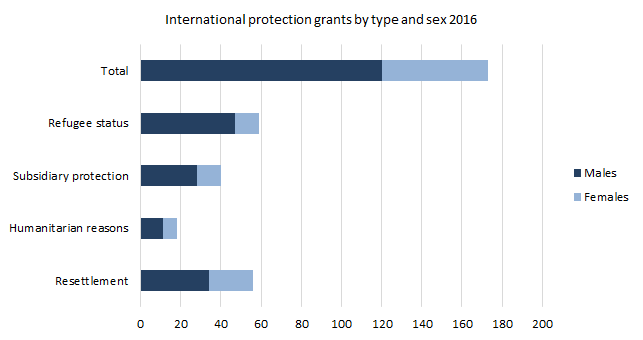Statistics Iceland has for the first time published statistics on applicants and granting of international protection. The data cover the period from 1997 to 2016. Furthermore, statistics on newly issued residence permits to non-EEA residents from 2008 to 2016 are published for the first time.
The number of those who have received international protection in Iceland has increased rapidly in recent years. Until 2007, the number of asylum seekers who were granted refugee status was less than 10 persons. Their number was less than 20 until 2013, after which it rapidly expanded. In 2016, the number of refugees reached previously unknown heights when 173 were granted asylum in Iceland.

The number of applicants for international protection during these years has also increased rapidly in recent years. In 2016, 1,100 persons applied for international protection. The increase in recent years is mainly due to people from Macedonia and Albania, who in most cases are denied international protection. Nevertheless, even when not considering these persons, the number of asylum seekers has significantly increased.
A residence permit is issued to non-EEA nationals who stay in Iceland for three months or more. The number of new permits fell sharply from 2008 to 2011, mainly due to a fall in employment or family reunification permits. The number of new permits has grown since, mostly due to education but also due to international protection grants and other causes. In 2016, 1,469 residence permits were issued. Of these, 61% were due to education or family reunification, with the rest split between work and other reasons. Most of the people who are issued a residence permit originate from Asia, but persons from the Americas come close second.